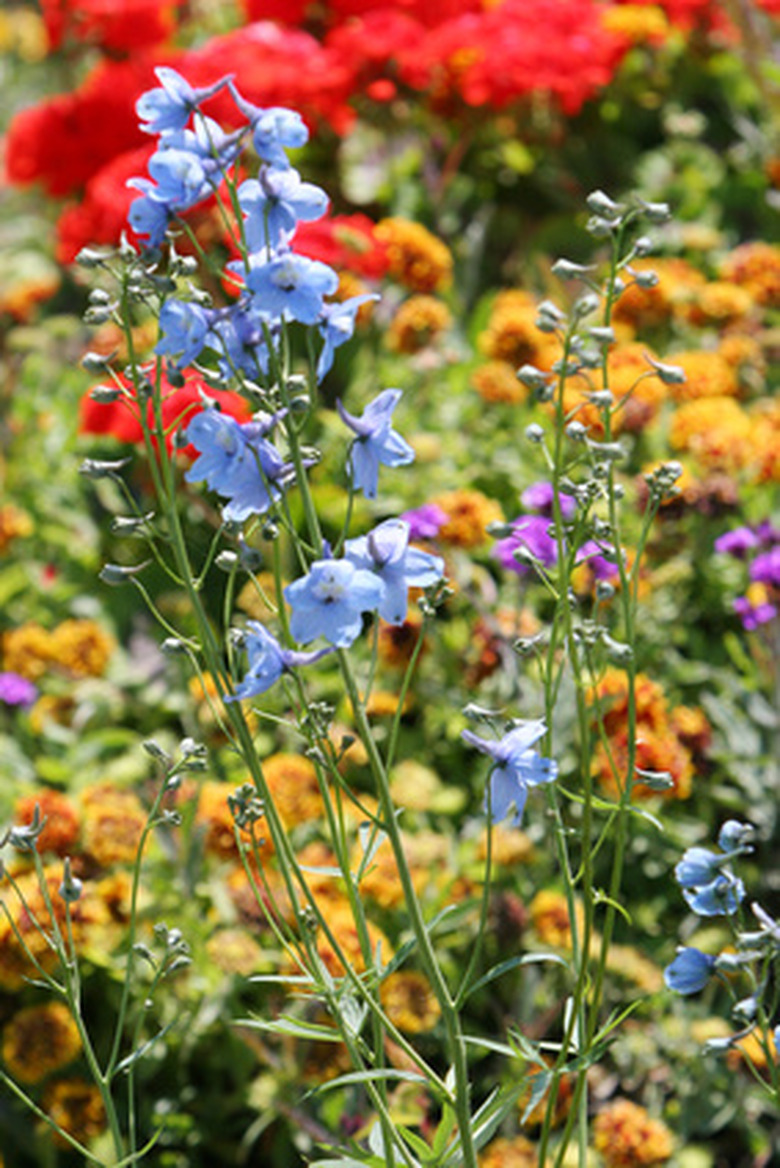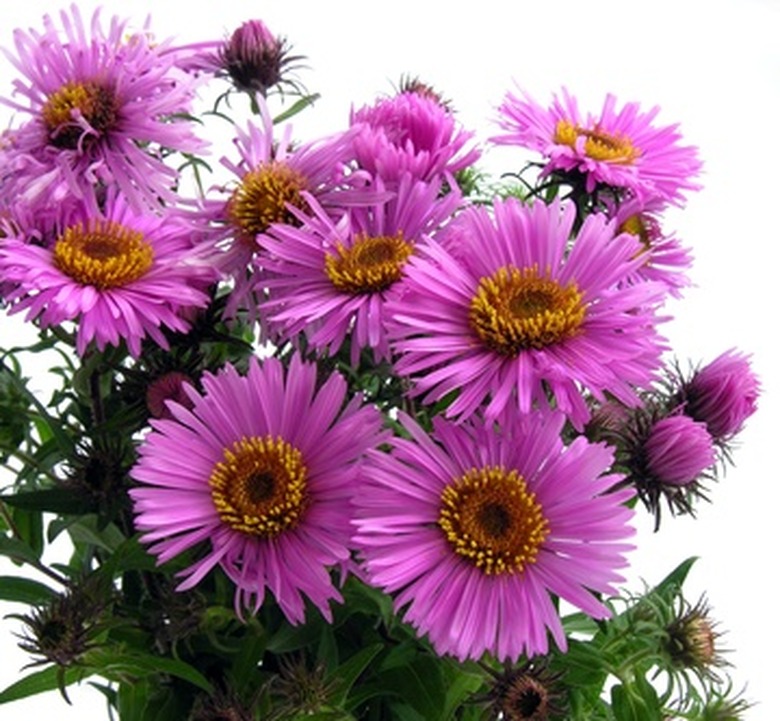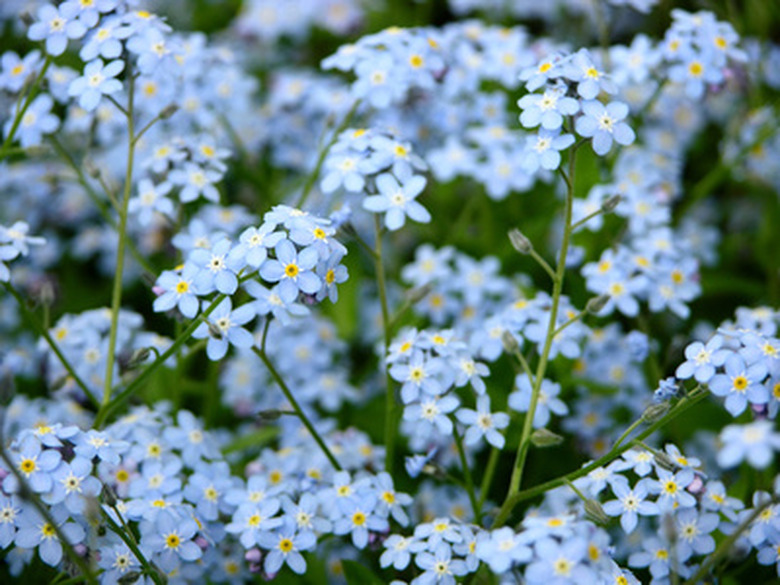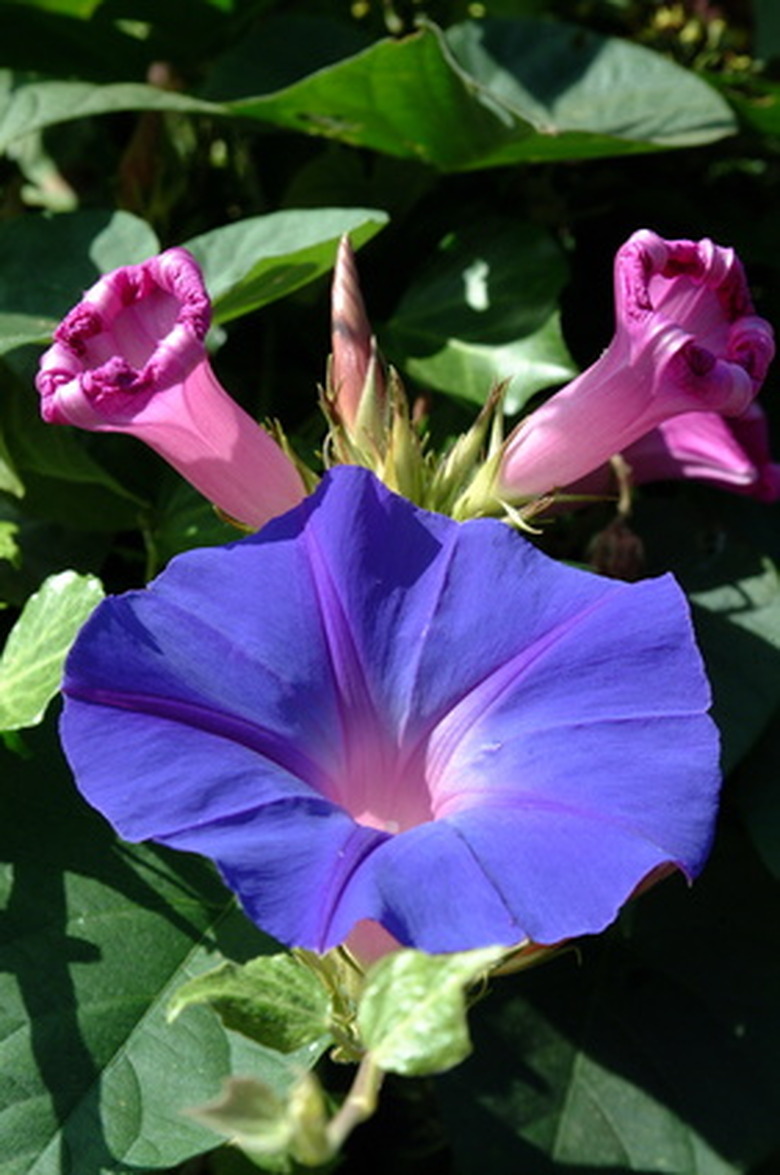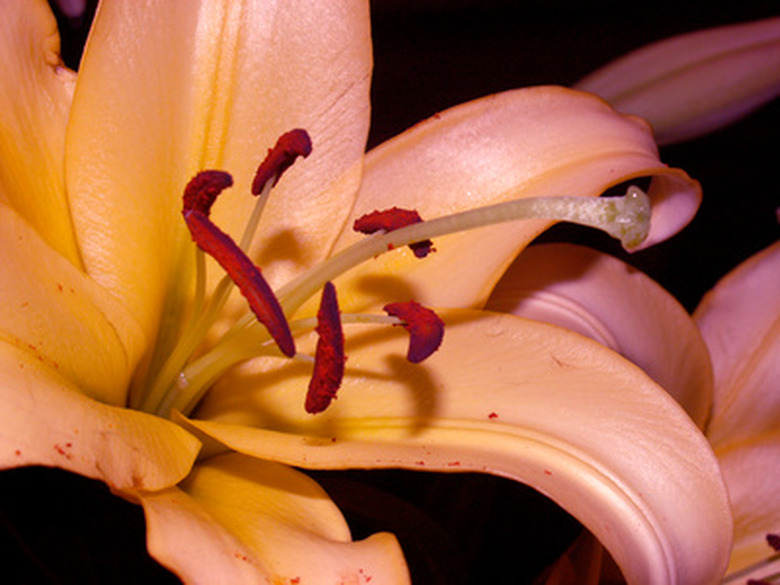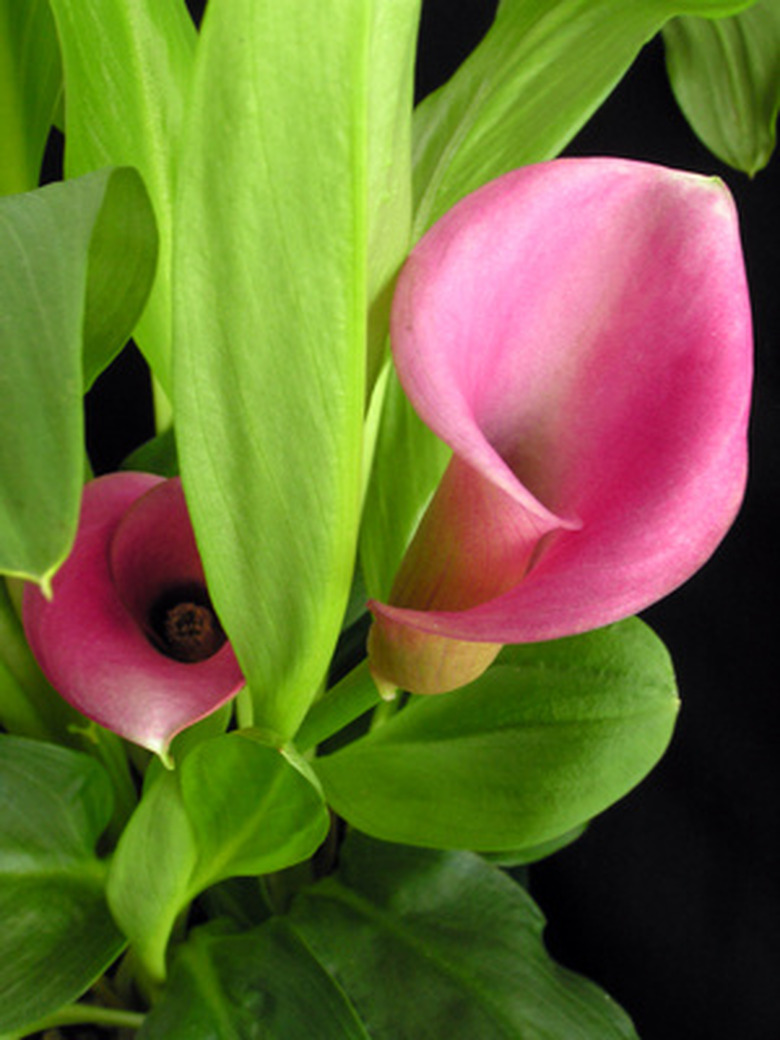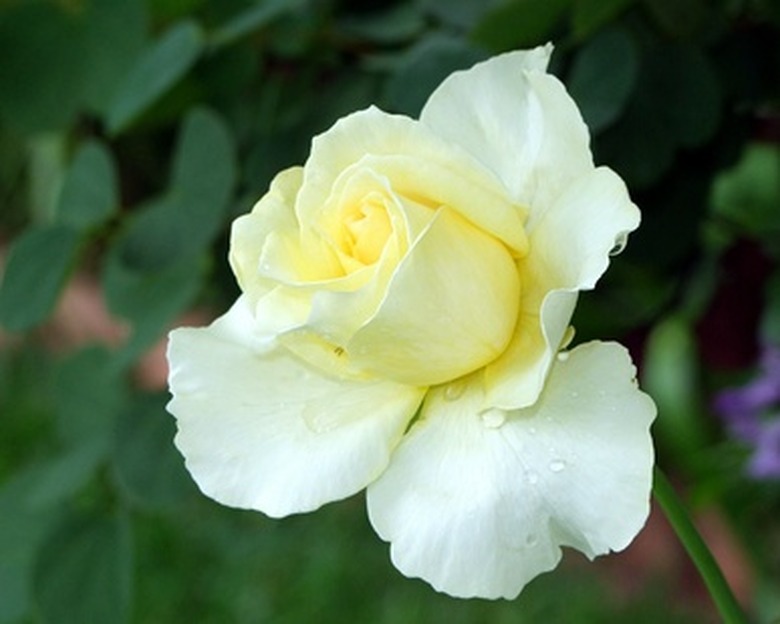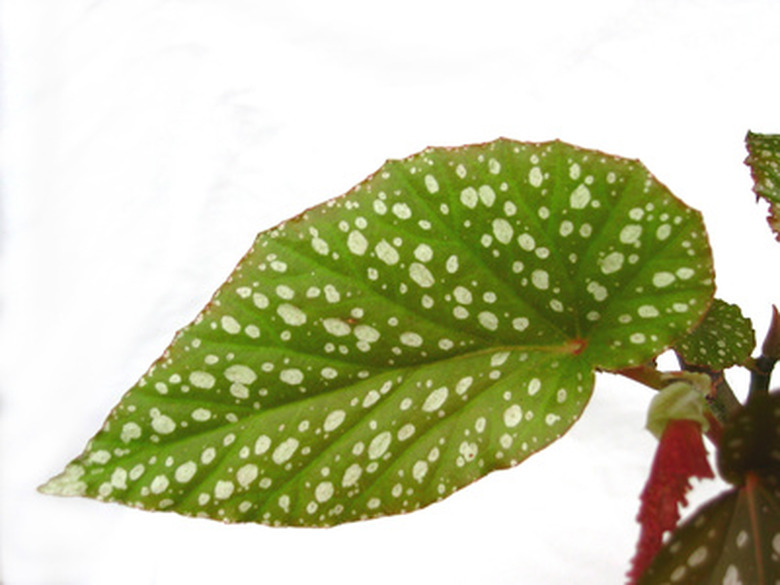Examples Of Angiosperm Flowering Plants
During the cretaceous period, a group of plants developed called angiosperms. These plants were characterized by a new evolutionary development: flowers. Flowers exist to help angiosperms reproduce. This reproductive strategy was successful enough that there are more angiosperms on Earth than any other type of plant. They are also the most diverse group of plants.
During the cretaceous period, a group of plants developed called angiosperms. These plants were characterized by a new evolutionary development: flowers. Flowers exist to help angiosperms reproduce. This reproductive strategy was successful enough that there are more angiosperms on Earth than any other type of plant. They are also the most diverse group of plants.
Asters
The reliable aster is a perennial, a kind of flowering plant that lives at least three years. Once perennials start blooming, they can bloom every year as long as conditions are right for them. Asters like full sun and good soil. They commonly bloom in autumn, though hybrids exist that bloom in spring.
- During the cretaceous period, a group of plants developed called angiosperms.
- Once perennials start blooming, they can bloom every year as long as conditions are right for them.
Forget-Me-Nots
Shorter-lived than perennials are biennials. The forget-me-not, for example, is a biennial in some environments. In colder areas, forget-me-nots live for only two years. Modest forget-me-nots like a bit of shade and don't like dry soil. Forget-me-nots are often light blue, but also come in pink, white and darker blue varieties.
Morning Glory
Morning glories are annuals, the shortest-lived angiosperms, which live only one season. Morning glories are properly named since the shy flowers only like to open in early morning, though some morning glories have been developed that bloom longer. The morning glory opens wide, with blossoms as big as 8 inches wide. The plant vines, growing in full sun up to 10 feet high if you give it the support of a trellis or string.
- Shorter-lived than perennials are biennials.
- Modest forget-me-nots like a bit of shade and don't like dry soil.
Lilies
The lily is a complete flower, meaning it has the four most basic parts of a flower: petals, sepals, male parts to make pollen and female parts to make fruit and seed. Lilies, which emerge from bulbs, grow to be 2 to 8 feet tall. They sometimes need a stake for support. The lily doesn't require high-quality soil; indeed, giving lilies good soil can create weak stems.
Calla Lilies
With no sepals or petals, the calla lilly is a "naked flower." It is also "incomplete," as are any flowers that don't have all four basic parts. The part of the calla lily that many people think of as a flower is actually a modified leaf. It emerges from the stem, furled funnel-like, sporting yellow, white, pink or red colors. Some calla lilies even have a light scent. The plants grow from rhizomes, a kind of underground stem.
- The lily is a complete flower, meaning it has the four most basic parts of a flower: petals, sepals, male parts to make pollen and female parts to make fruit and seed.
- The part of the calla lily that many people think of as a flower is actually a modified leaf.
Roses
In botany the rose is considered "perfect," because it has both male and female parts–all the necessities for reproduction. A fascination with roses has led to an abundance of types–rose bushes, climbing roses, long-stemmed roses, miniature roses and roses in many shades of color.
Begonia
Imperfect flowers like the begonia are either male or female. This being the case, both male and female flowers are needed for successful reproduction. The begonia plant takes care of this by growing both kinds on each plant. Plants that do this are called monoecious. Dioecious angiosperms need at least two plants to accomplish reproduction. Begonias are perennials, but since they don't do well in the cold, they are often used as annuals in northern climates. They can also be used as potted plants and some varieties are appropriate for hanging baskets.
- In botany the rose is considered "perfect," because it has both male and female parts–all the necessities for reproduction.
- This being the case, both male and female flowers are needed for successful reproduction.
References
- "A Garden of Your Own"; Michael O'Brian; 1993
- FloridaGardener: Botany 101
- Flower Garden: Types of Flowers
